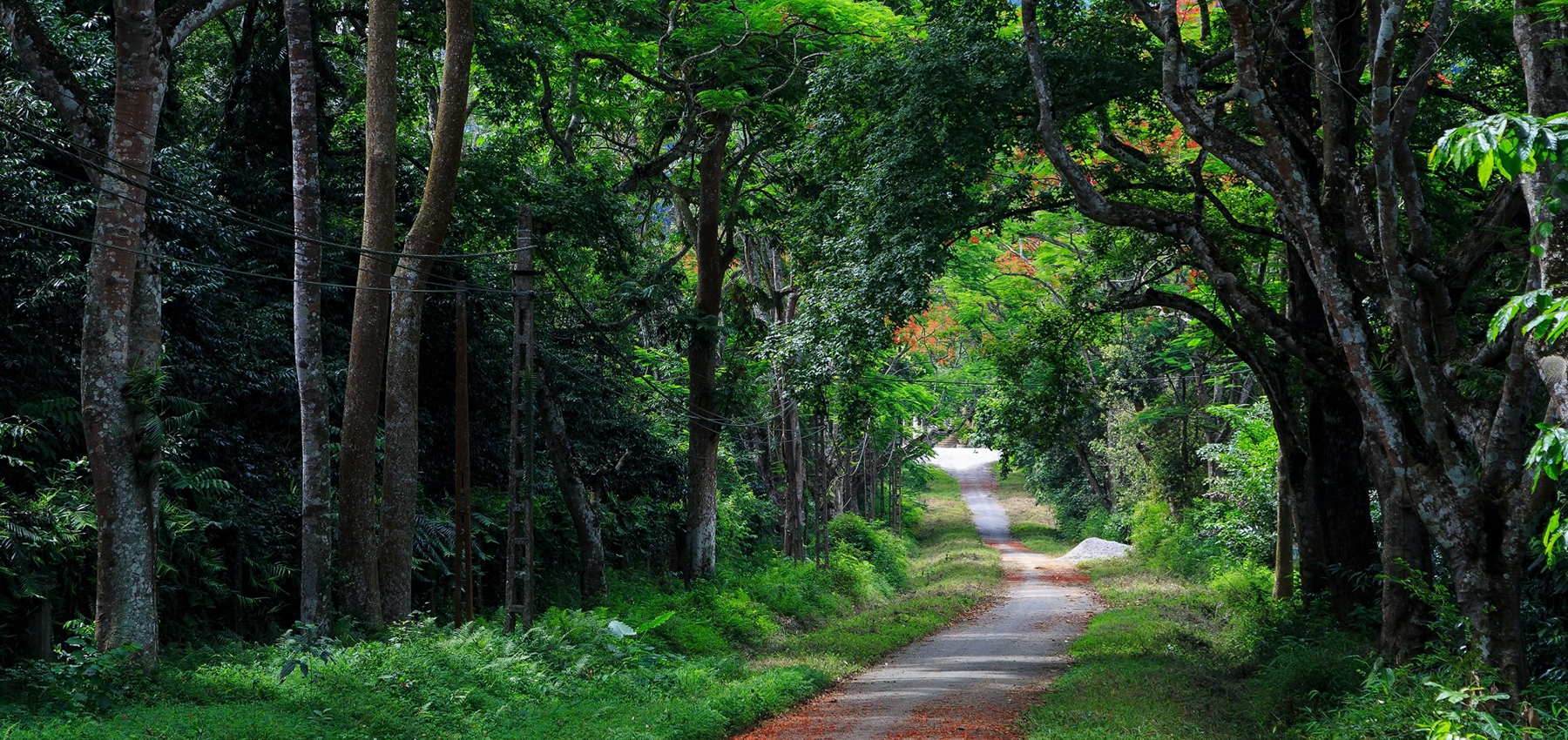

October 15, 2017• English, News
On September 26, EPRC received news from Education for Nature – Vietnam (ENV) that there is a baby langur kept as a pet at a household in Long Bien, Hanoi. The policemen in the area found this baby and after recognizing their faulty action, the household surrendered the baby to EPRC.
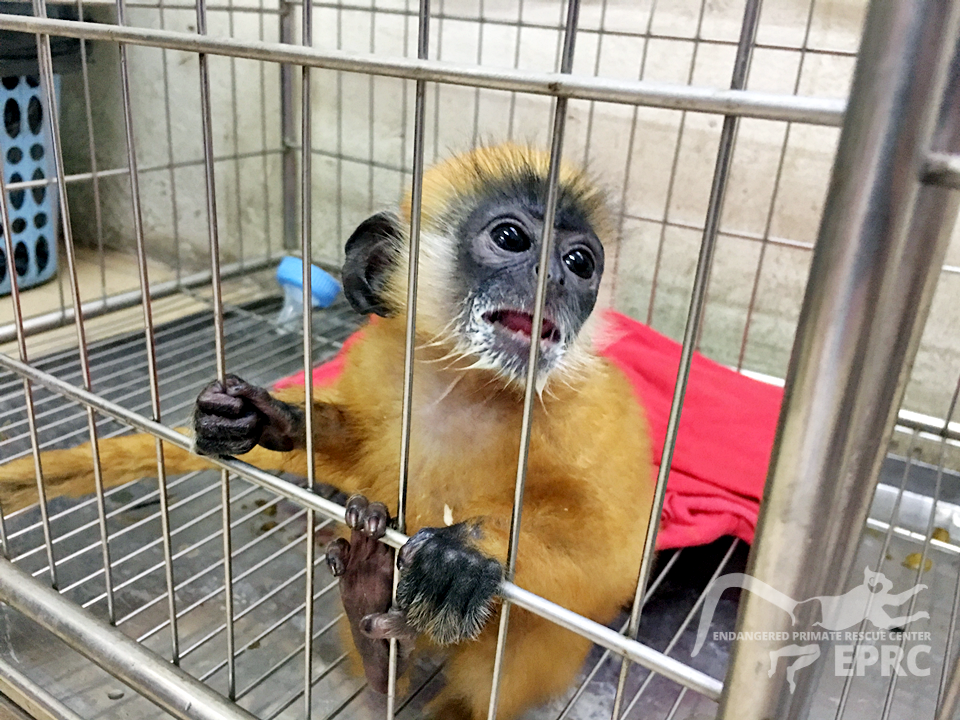
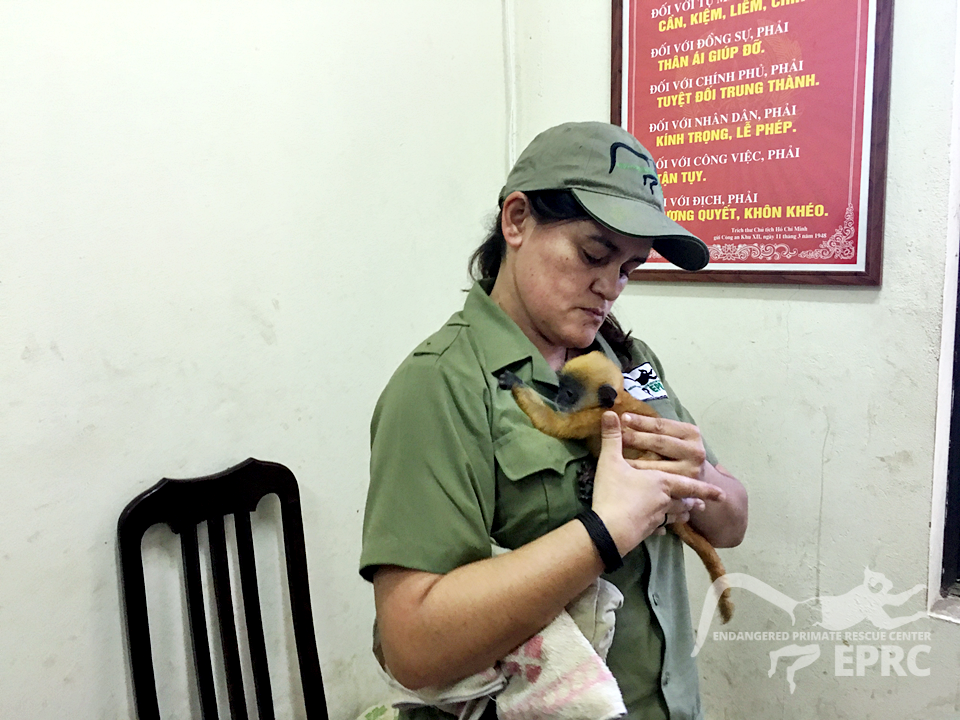
» SONYA PROSSER – EPRC DIRECTOR WENT TO RESCUE THE BABY BY HERSELF.
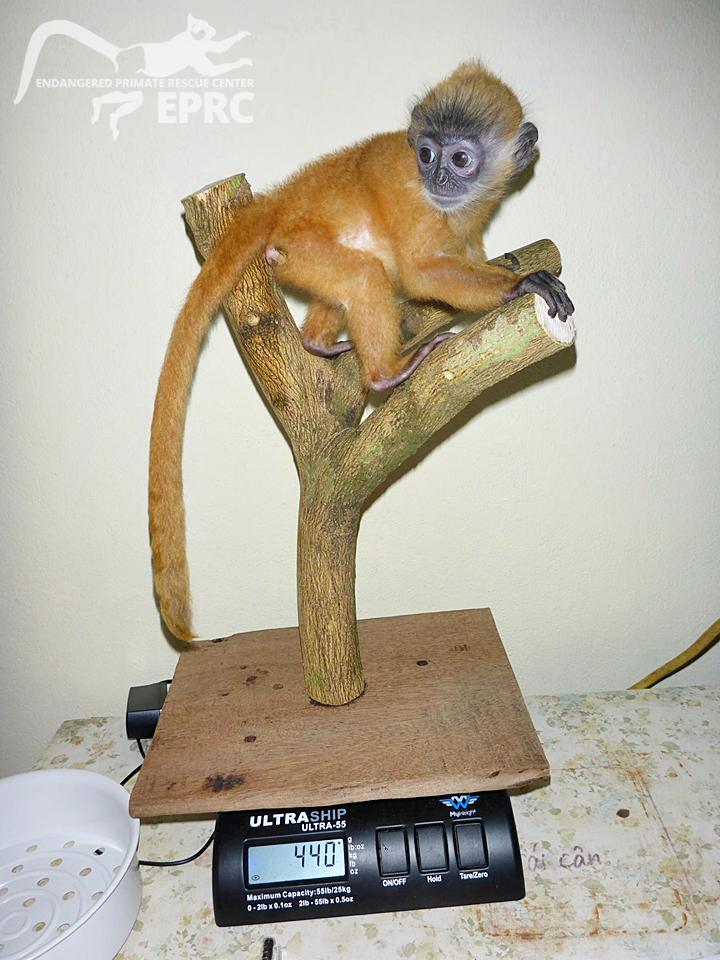
» THE BABY LANGUR IS QUITE SMALL, YET IN PRETTY GOOD HEALTH CONDITION.
October 9, 2017• English, Learn About Vietnam's Primates
Drinking salt water is a unique typical trait in Cat Ba Langurs which differentiates them from other langur species. As their only natural inhabitat area now is Cat Ba island, it seems that these langurs have adapted to their surrounding environment and seek for some salt water just like the fishermen like their food salty.
The feature picture was beautifully and timely taken by Cat Ba Langur Conservation Project – the only on-site project on Cat Ba island now which specializes in Cat Ba langurs. They established a protected langur sanctuary inside Cat Ba National Park in 2002, and work closely with the rangers to guarantee the safety of these Vietnam endemic primates which are also one of the rarest primates on Earth.
October 8, 2017• English, Photo Album
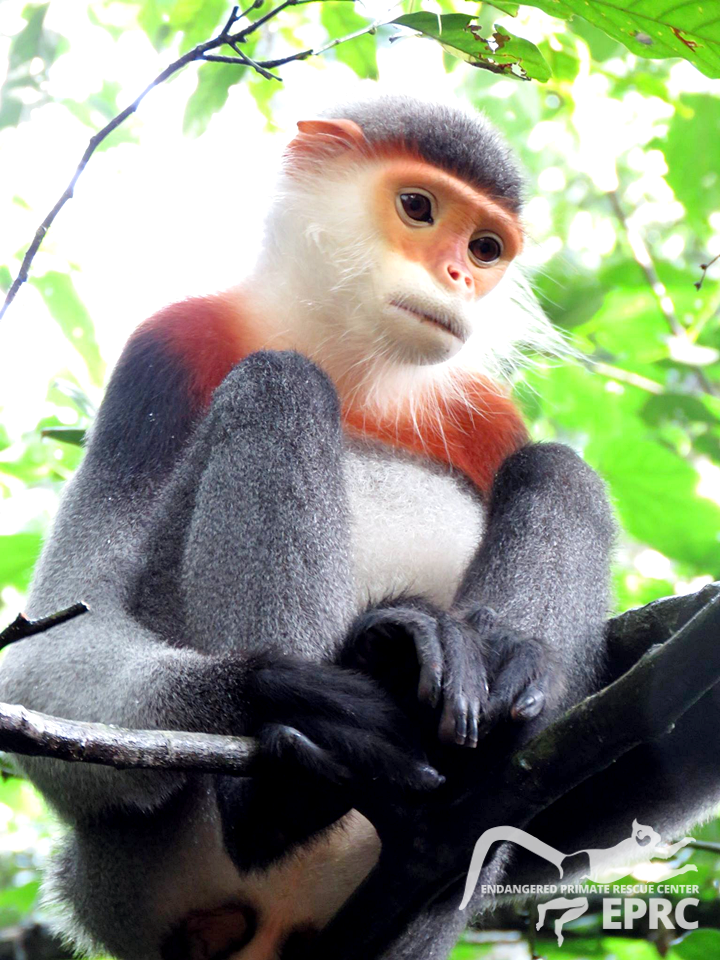
Doesn’t he look stunning like a wax statue? This male Grey-Shanked Douc Langur is residing in our semi-wild area, and you can clearly see what a wild animal can benefit from its natural habitat.
Please support us and these beautiful animals by Donating, Sponsoring or Volunteering!
October 4, 2017• Behind the Scenes at EPRC, English
Animal keeping is not a regular job in Vietnam. For many people in Vietnam, this honorable job was seen as a “low-class” job. People think that animal keepers just purely clean poo of animals and feed them. The truth is, this job is much more than that.
September 22, 2017• Behind the Scenes at EPRC, English
On September 18th, EPRC organized a necropsy workshop for veterinarian staffs of several rescue centers, including:
Save Vietnam’s Wildlife, Cuc Phuong Turtle Conservation Center (Trung Tâm Bảo Tồn Rùa Cúc Phương), Wildlife Rescue Center in Soc Son (Hanoi), Wildlife Conservation Society (WCS) and EPRC.
In this workshop, we were honored to have attentive guidance from Dr. Dee. McAloose – Head of Pathology at the WCS/Bronx Zoo New York City and Dr. Bonnie Raphael – retired experienced Veterinarian of WCS. The workshop lasted for 3 full days and packed with practical knowledge related to necropsy on wildlife animals.
September 15, 2017• English, Learn About Vietnam's Primates
Oh hi there! Sorry for the shocking content This is an sexual organ of a male Grey-Shanked Douc Langur (Pygathrix cinerea) in its “peak”. In EPRC, we usually joke that his clock likes to indicate at exact 12 o’clock.
FACT
It is interesting that douc langurs do not only have their sexual organs erected because of mating desire. Like this photo, it was taken when we started grouping 3 grey-shanked douc langurs and the male was pretty excited (non-sexually because he hadn’t seen the females at that time yet). They also “enlarge” their p*nis in front of an enemy because they want to appear bigger in order to scare away the enemy.
This photo was posted due to agreement with most of our audience on Facebook. So please don’t report us if you find this offensive ![]() Instead, feel honored because you have a chance to see such a beautiful anatomy
Instead, feel honored because you have a chance to see such a beautiful anatomy ![]()
September 14, 2017• Behind the Scenes at EPRC, English
And Dr. Bonnie Raphael does not only stay at EPRC for 1 day, 1 week, but 3 MONTHS! She is a highly recognizable veterinarian with 20 years of experience with taking care of animals in WCS (Wildlife Conservation Society). Despite her retirement last year, Bonnie came back to EPRC to care for the health of primates at our center. Our deepest appreciation goes to you, a kind and warm-hearted woman Bonnie Raphael.
Since the day she arrived in the middle of August, she has been working tirelessly with some operations on primates at EPRC. Below are some photos from a surgery for Noisy Chi – the Indochinese Grey Langur who had a tumor on her tail.
September 12, 2017• Behind the Scenes at EPRC, English
Stick insects are favorite food of lorises. In this short video, you will have a chance to see 2 twin pygmy lorises sharing a single insect. Their names are Flip and Flop who were confiscated and hand-reared in EPRC.
Don’t forget to subscribe to our channel to see more close-up to life of Vietnam primates at EPRC!
September 11, 2017• English, News
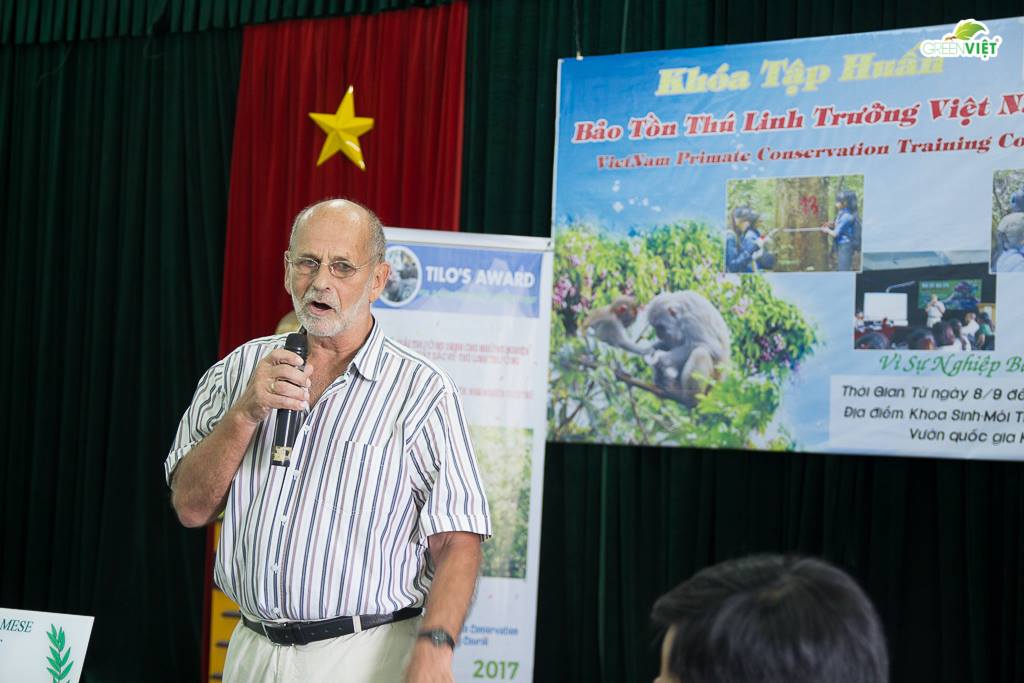
September 10, 2017• English, Learn About Vietnam's Primates
It is truly a magic of nature when you see the orange heads of baby langurs popping out from their mothers’ black arms (in case of Hatinh langurs). All of these 5 infants were born at EPRC and now are grown-ups, healthy and strong – waiting for their possible release days in the future. The baby langurs may look alike, but if you look more closely, you will spot out some slight differences.

Established in 1993, EPRC is a not for profit project dedicated to the rescue, rehabilitation, breeding, research and conservation of Vietnam’s endangered and critically endangered primate species.
© Endangered Primate Rescue Center 2020
Website by MINIMUMMEANS